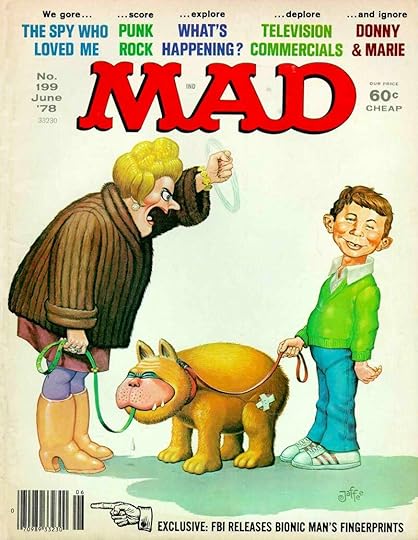James Frey's Blog, page 35
April 19, 2023
4/20 Etymology
Any self-respecting stoner knows what to do on 4/20. But few seem to know how the otherwise innocuous date became an international celebration of cannabis culture.
The rumors about the origins of 4/20 tend to drift around like so much smoke from a tightly rolled joint: Is 420 the police radio code for smoking marijuana in public? Was it the day Adolf Hitler died? Or Jim Morrison of “The Doors”? Did it mark the day of death of someone else famous or infamous?
Nope. Negative. Try again. None of the names commonly associated with the origin of 4/20 actually died on April 20 (although Hitler was born on that day in 1889). In California, Section 420 of the penal code refers to the crime of barring someone from lawfully entering public land — so that is not marijuana related either.
April 12, 2023
Wow. Bravo,MIT – keep going.
Scientists at MIT have unlocked a major breakthrough in the battle to reverse the effects of Alzheimer’s disease — one that shows “dramatic reductions” in neurodegeneration, a report stated.
The exciting achievement came about after researchers were able to interfere with an enzyme typically found to be overactive in the brains of Alzheimer’s patients.
The hyperactive enzyme, CDK5, was treated with an unnamed peptide, or string of amino acids.
Early tests conducted on mice revealed significant — and promising — results.
“This peptide has the ability to enter the brain and in a couple of different models, the peptide shows protective effects against loss of neurons and also appears to be able to rescue some of the behavior deficits,” study author Li-Huei Tsai, director of MIT’s Picower Institute for Learning and Memory, told The Post.
April 10, 2023
Haute Compost
‘Compost has become a staple of cocktail-party conversations.’ You can get manure from eucalyptus-eating goats and even a blend from Princess Diana’s childhood home

There are wait lists for high-end compost. PHOTO: HUGO YU FOR WSJ. MAGAZINE
Miranda Michaelis, a 56-year-old flower farmer in Oxfordshire, England, says she grows some of the healthiest tulips around. Her secret is simple, she says: compost harvested from Princess Diana’s childhood home.
She buys it from the Land Gardeners, a company in London that recently began to produce compost at Althorp Estate, the 500-year-old Spencer family property where Diana grew up. The mix, called Climate Compost Inoculum, includes waste from the Spencer family’s horses and cows, as well as ingredients such as weeds, young wood chips and buckwheat. A small, coffee-size bag goes for £20, or about $25 a pop.
Humble compost—a staple of agriculture for thousands of years—has become a luxury item. Amid a burst of pandemic interest in gardening and a growing focus on sustainability, shoppers are increasingly willing to pay top dollar for a bumper crop of artisanal fertilizer. Compost makers are giving their products, essentially manure and decomposed plant matter, a level of scrutiny that is typically seen in fine dining.
“It’s a craft, making compost like we do,” says Bridget Elworthy, one of the co-founders of Land Gardeners. “It’s like making wine, although making wine seems very glamorous, and making compost is very unglamorous. So maybe it’s like making yogurt.”
April 9, 2023
Al Jaffee Gone
BY JESSICA GELT

LAMBIEK Comiclopedia
Al Jaffee, the iconoclastic cartoonist who created Mad Magazine’s most enduring feature — the Fold-In — and served as the publication’s longest-running contributor, died at a hospital in Manhattan. He was 102.
The cause was multiple-organ failure, his granddaughter Fani Thomson told the New York Times.
Jaffee’s illustrations first appeared in the legendary satiric magazine in 1955, shortly after it transitioned from a comic book to a magazine. In 1964, he created the “Fold-In,” a back-of-book feature that became an instant classic at a time when other magazines were championing the ubiquitous fold-out.
Jaffee’s idea involved folding a picture vertically inward to reveal a completely new image and caption. A fold-in from 1969 resulted in an image of Charlie Brown, Snoopy and Linus folded in from a piece of abstract art. The caption read: “Modern Art has taken some pretty wild turns in recent years. But no matter which direction it takes, it seems to be headed more and more toward total incomprehensibility.”
April 5, 2023
Babe’s Lumber
A Babe Ruth baseball bat initially purchased in 2018 for $400,000 has more than quadrupled in value.
By Alexandra Tremayne-Pengelly

Babe Ruth at Polo Grounds in 1921. Transcendental Graphics/Getty Images
A baseball bat formerly used by Babe Ruth sold for $1.85 million in a private sale, breaking auction records to become the world’s most valuable bat.
The historic piece of sports memorabilia received the highest possible grading score from authentication company PSA, according to Hunt Auctions, an auction house based in Exton, Pennsylvania, which announced the sale yesterday.
Used by Babe Ruth circa 1920 to 1921, the baseball bat is known as the “Polo Grounds bat,” taking its name from the Polo Grounds stadium used by the New York Yankees until 1922. Its sale surpasses the previous record for a baseball bat sold at auction, which was set in August when another game-used Ruth bat sold for $1.68 million in a sale from Dallas-based auction house Heritage Auctions.
April 3, 2023
Bureau of Space Vehicles Coming
by Katherine Fidler

Space junk is an increasing issue in low orbit (artist’s impression, not to scale) (Picture: PA)
Aerospace companies and experts are calling on governments around the world to adopt a ‘highway code’ to help tackle the increasing problem of space junk.
It is estimated there are more than 36,000 objects in space larger than 10cm, and 130million between 1mm and 1cm. All are moving at speeds of more than 10,000km an hour, which pose a risk to the safety of both crew in space and other satellites.
The Space Safety Coalition (SSC) has unveiled a landmark publication detailing what it regards best practice for all space operators as the number of launches and spacecraft increases exponentially.
These include prioritising sustainable practices during satellite launches – such as reusable launch vehicles – developing propulsion systems that prevent gases being released into the atmosphere and a ‘highway code’-style guidebook for manoeuvring spacecraft to avoid collisions.
March 23, 2023
CNEOS1 2014-01-08
Fragments of a peculiar meteorite crashed into the Pacific Ocean in 2014. Avi Loeb thinks they may be proof that intelligent extraterrestrials exist.
by David Axe
 Photo Illustration by Thomas Levinson/The Daily Beast/Navicore
Photo Illustration by Thomas Levinson/The Daily Beast/NavicoreThe world’s top alien hunter is about to embark on his most ambitious—and potentially history-making—mission yet. Harvard physicist Avi Loeb is organizing a $1.5-million expedition to Papua New Guinea to search for fragments of a very strange meteorite that impacted just off the coast of the Pacific nation in 2014.
There’s compelling evidence that the half-meter-wide meteorite, called CNEOS1 2014-01-08, traveled from outside our solar system. And that it’s made of extremely hard rock or metal—a material that’s hard and tough enough to prove the meteorite isn’t a meteorite at all. Maybe it’s an alien probe.
It’s a long-shot effort. After years of work, Loeb and his team have, with a big assist from the U.S. military, narrowed down CNEOS1 2014-01-08’s likely impact zone to a square kilometer of the ocean floor, nearly two kilometers underwater. But the fragments themselves are probably just a few millimeters in size. It’s worse than looking for a needle in a haystack. Loeb is basically preparing to look for big sand in a square-kilometer patch of small sand.
March 22, 2023
NFT Win
from artnet
A U.S. Court Has Handed a Legal Victory to Digital Artist Kevin McCoy in an Ownership Challenge Over the First-Ever NFTThe judge called the lawsuit an attempt to ‘exploit’ questions of open ownership.
[image error]Kevin McCoy, Quantum (2014). Image courtesy Sotheby’s.Kevin McCoy, the artist who is widely credited with creating the first NFT, and auction house Sotheby’s have won a legal victory in a lawsuit that challenged the terms and propriety of a 2021 sale at which the token sold for $1.47 million.
U.S. Magistrate Judge James L. Cott dismissed a lawsuit, in a detailed 43-page decision issued March 17 that marks one of the first important tests surrounding NFT ownership and is likely to set a precedent going forward.
The plaintiff in the case, filed in U.S. District Court, Southern District of New York was anonymous and sued through Free Holdings, a Canadian holding company. The claims centered on the fact that McCoy, in 2014, had created Quantum, his first NFT, using a blockchain known as Namecoin. McCoy later chose to preserve his original metadata using a token on a different and more modern blockchain, Ethereum. McCoy’s sale of Quantum at Sotheby’s in 2021 included the Ethereum token.
“Roughly a month before the sale, Free Holdings created a new NFT on the Namecoin blockchain, using the same namespace that McCoy had used seven years earlier and duplicating McCoy’s original metadata. Free Holdings then alleged that it was actually the owner of the ‘first-ever NFT,’” according to a statement shared with Artnet News from McCoy’s attorneys at Pryor Cashman.
[ click to continue reading at artnet ]
Tattoo-proof
When you stick ink-filled needles into your skin, your body’s defenders respond accordingly. Scientists aren’t sure if that’s good or bad for you.
 Corbis / Getty
Corbis / GettyIn 2018, I paid a man a couple hundred dollars to repeatedly jam several needles into the skin of my right wrist. I felt as if I were being attacked by a microscopic cavalry of crabs. Into every jab went black ink, eventually forming the shape of double quotation marks. It was my first tattoo, and likely not my last.
In the thousands of years that tattoos have been around, not much has changed. The practice still involves carving wounds into permanent, inked-in shapes that we find aesthetically pleasing. But much of tattooing remains mysterious: Scientists still aren’t sure what makes certain tattoos fade fast, why others stick around when they’re supposed to disappear, or how they react to light. One of the strangest and least-studied enigmas, though, is how tattoos survive at all. Our immune system is constantly doing its darndest to destroy them—and understanding why it fails could clue us in to one of our bodies’ most important functions, even when we leave the skin blank.
March 21, 2023
Influence Over Artistry
AFP
Anthony Gonzalez, the man behind M83, the group that helped define electro-pop, fears for a music industry that increasingly wants artists to be influencers.
M83 has had a string of global hits and critically lauded albums, with the 2011 song “Midnight City” clocking up more than 800 million listens on Spotify.
In the words of music site Pitchfork, the group’s mix of dreamy electronica and emotive rock has “become the base stock of most popular indie acts”.
M83’s new album, “Fantasy”, is another ecstatic slice of electronica that mixes futuristic sounds with nostalgic emotion.
It’s about “escaping the daily routine, the macabre news environment, and leaving some place for the imagination and dreaming,” Gonzalez told AFP.
James Frey's Blog
- James Frey's profile
- 3309 followers



